Game Design for Education: My Internship in Taiwan
Published:
In the heart of Yunlin County, Taiwan, lies a bustling hub of innovation and learning: NFU Cross-disciplinary Innovation Maker Space at National Formosa University (NFU). It was there, from June to December 2019, where I had an opportunity to develop an interactive game for the Yunlin County Magistrate’s Children Club (YLCMCC). My adventure was filled with its own set of trials, triumphs, and learning curves, all contributing to a profound experience.
Project Overview
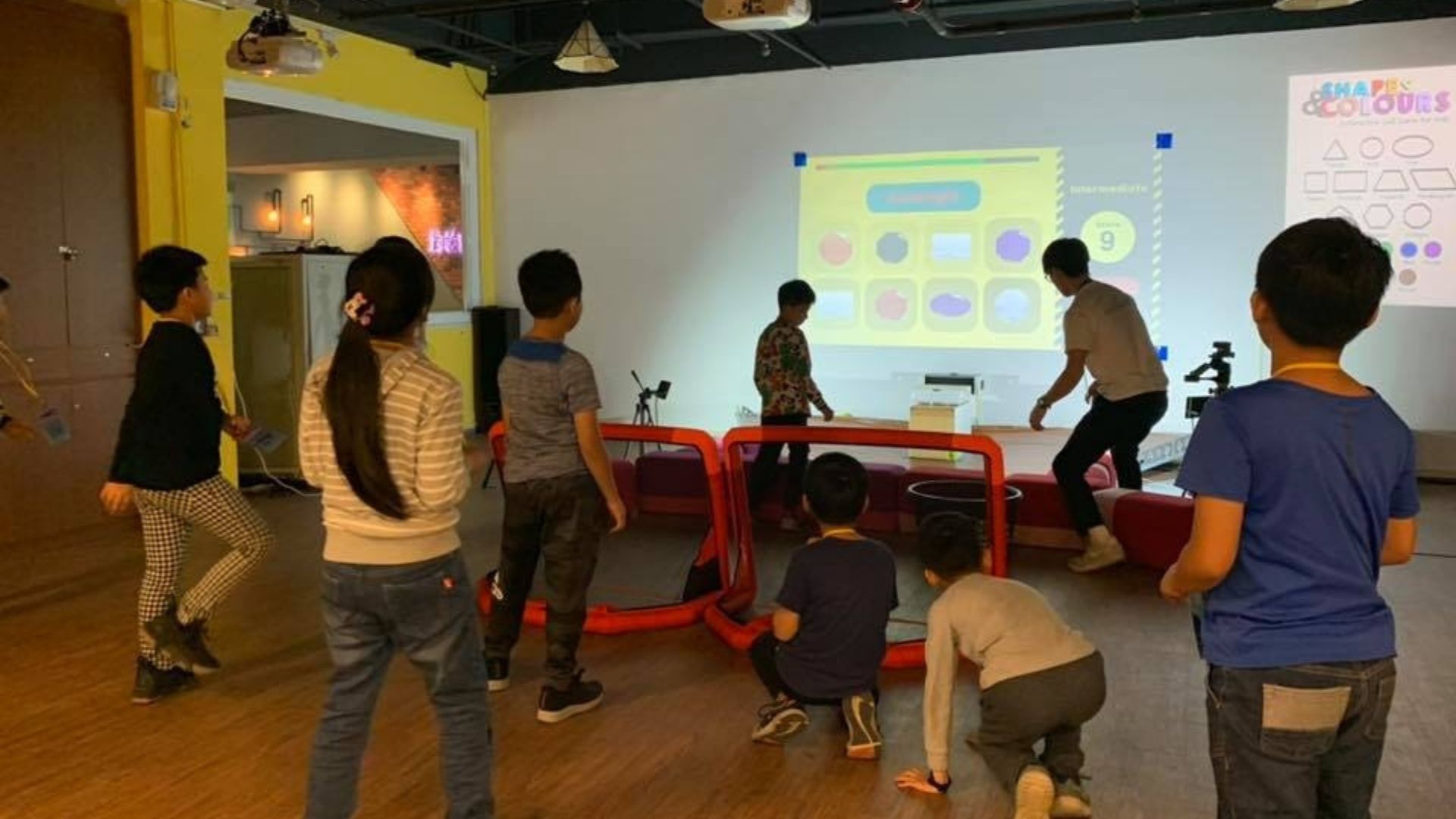
The project was titled “Shapes & Colors”, an interactive game designed to teach English vocabulary to children between the ages of eight and twelve. It’s not just an ordinary language learning tool; it’s a fun and competitive game. Players must hit balls into corresponding answers on the wall, while their energy decreases and the game’s difficulty escalates. The game boasts 3 levels, each progressively more challenging than the last, phishing children to learn while keeping the experience engaging.

The YLCMCC, managed by the National Formosa University, aims to expose local children to technological advancements and uses a hands-on approach to education. “Shapes & Colors” was thus designed to fit right into the YLCMCC’s mission, providing a learning tool that is technologically advanced yet user-friendly for the kids.
Why this Project?
As a non-native English speaker, I could relate to the fear of making mistakes when speaking English. This was a common phenomenon I observed among many Taiwanese people due to their unfamiliarity with the language. Furthermore, the English curriculum in Taiwan resembled Thailand’s - focused heavily on academic learning, leaving little room for interactive and fun experiences. I saw a need for change, a chance to revolutionize the language learning process and make it more enjoyable for children. This became the motivation behind the “Shapes & Colors” project.
Technical Implementation
The game was built primarily using Python, with Pygame library for the game mechanics and a custom-built ball detection program that works in tandem with the game. Building the ball detection program was challenging as it had to accurately detect fast-moving objects. On the other hand, the game mechanics included programming the rate at which a player’s energy decreases to create an engaging experience.
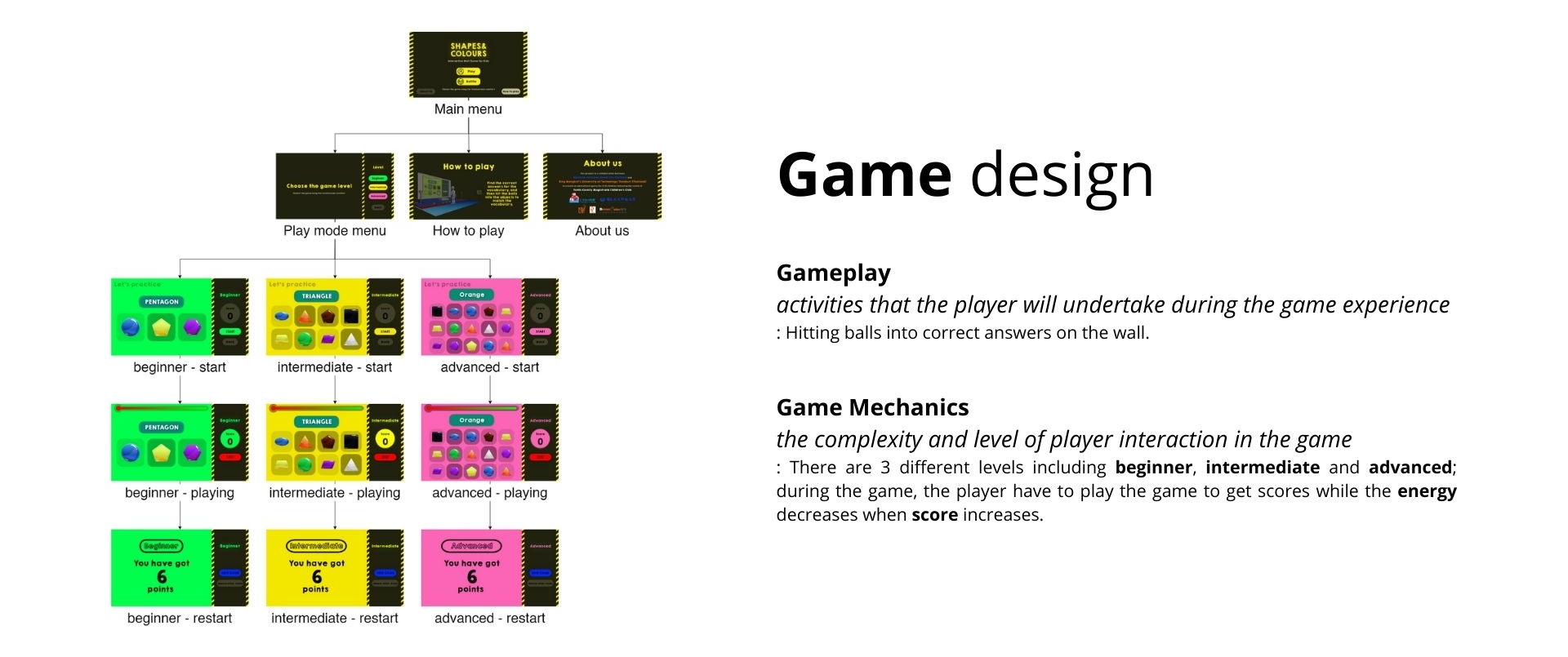
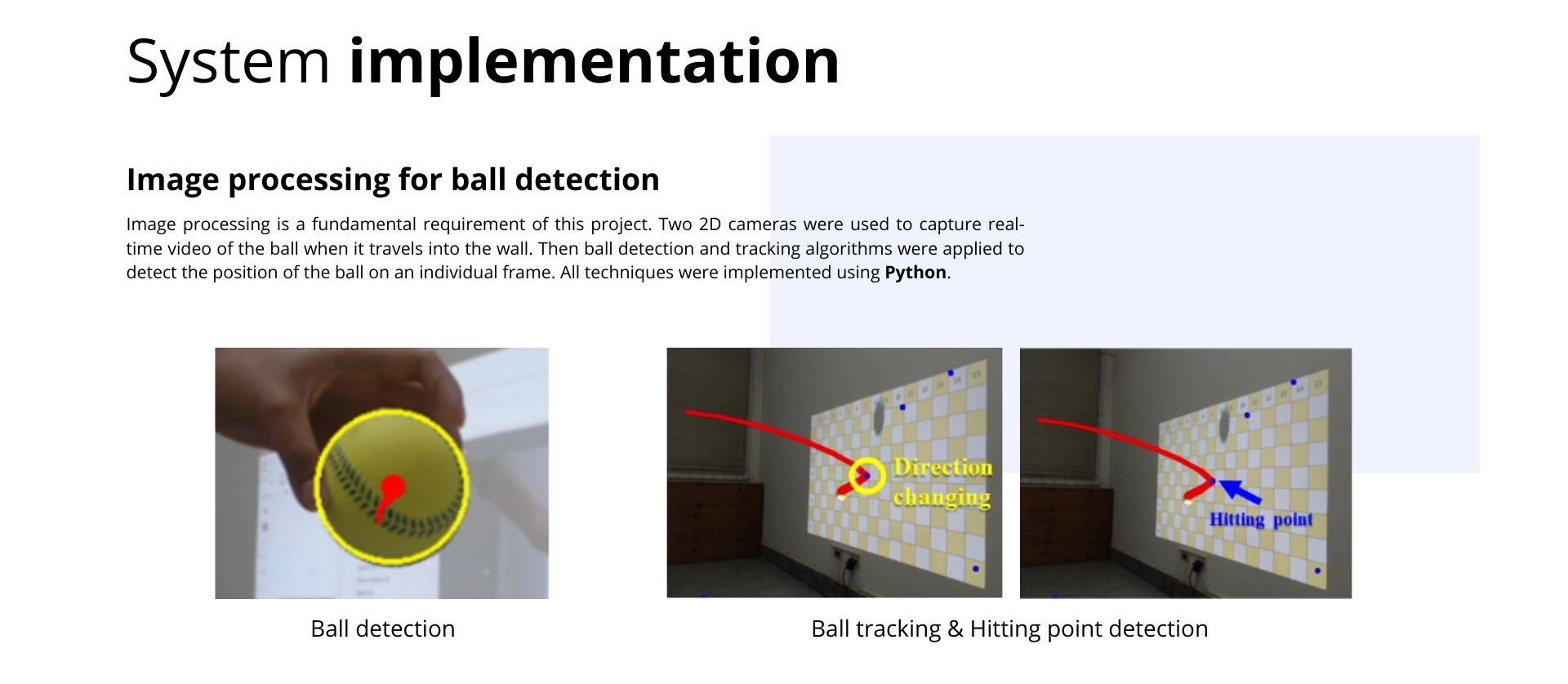

The setup of the game station was another crucial part of the project. Given that the game involves physical interactions, we required a large space, roughly 5 by 5 square meters. The setup included a robust white wall to project the game, a short-throw projector, a sloping platform for the balls to roll back to the tray, and a touch screen monitor near the playing zone for operating the game.
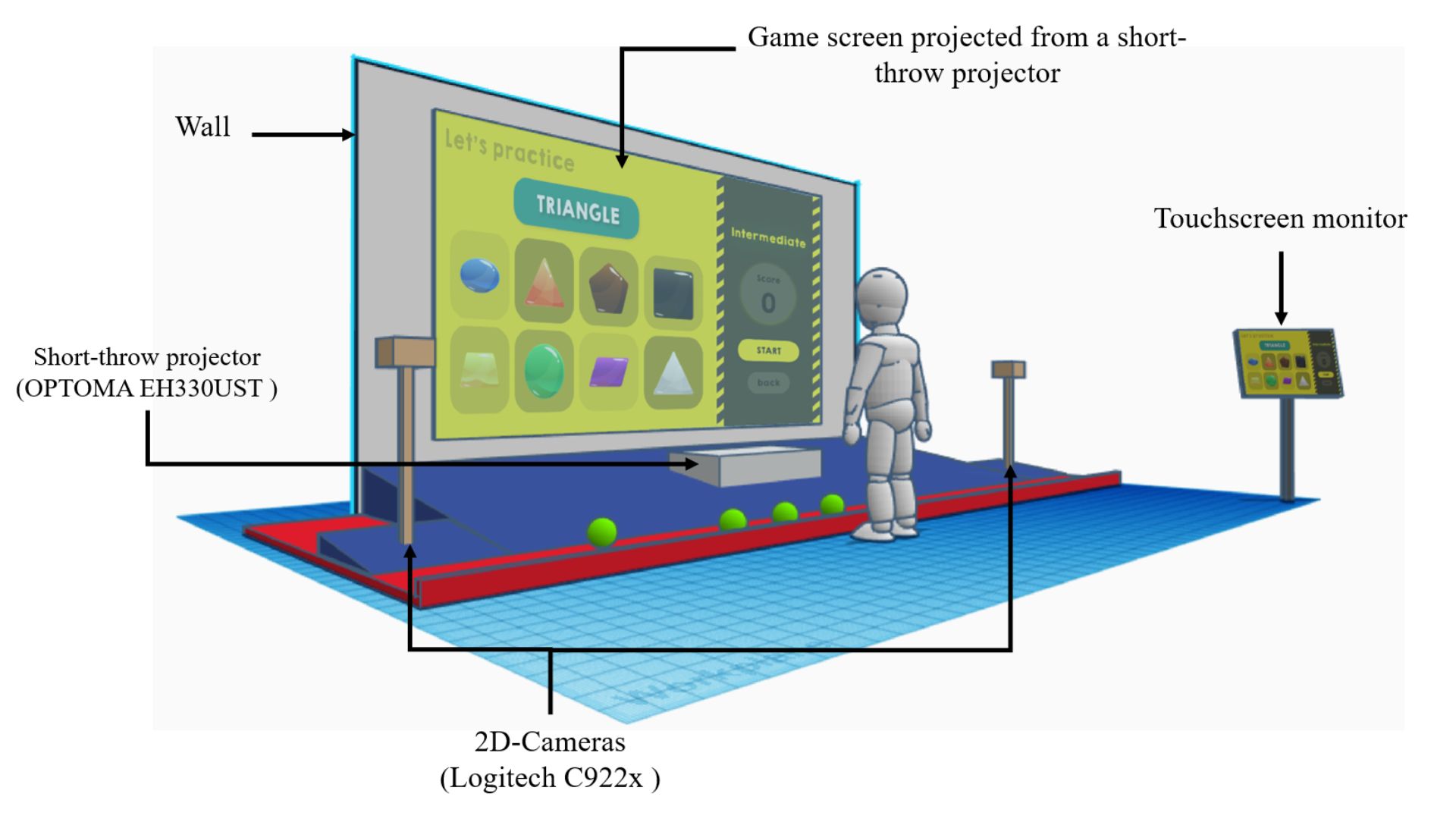
Methodology
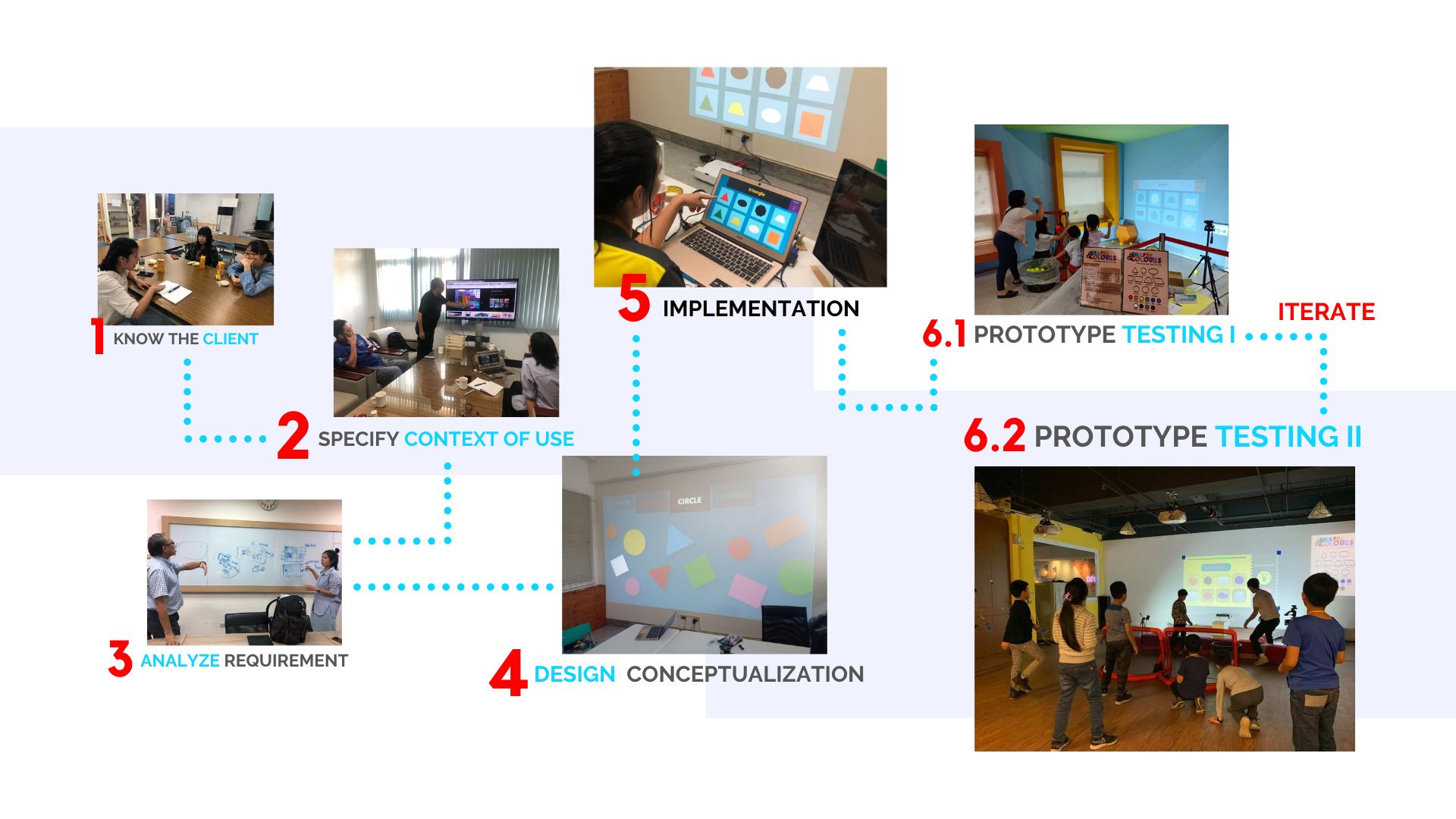
My process was deeply rooted in design thinking. This involved identifying the needs of the YLCMCC, specifying the context of use for the game, analyzing the requirements, and then conceptualizing the design through prototyping and testing. The first version of the interactive game was created and tested with children, parents, YLCMCC’s staff, and an English teacher.
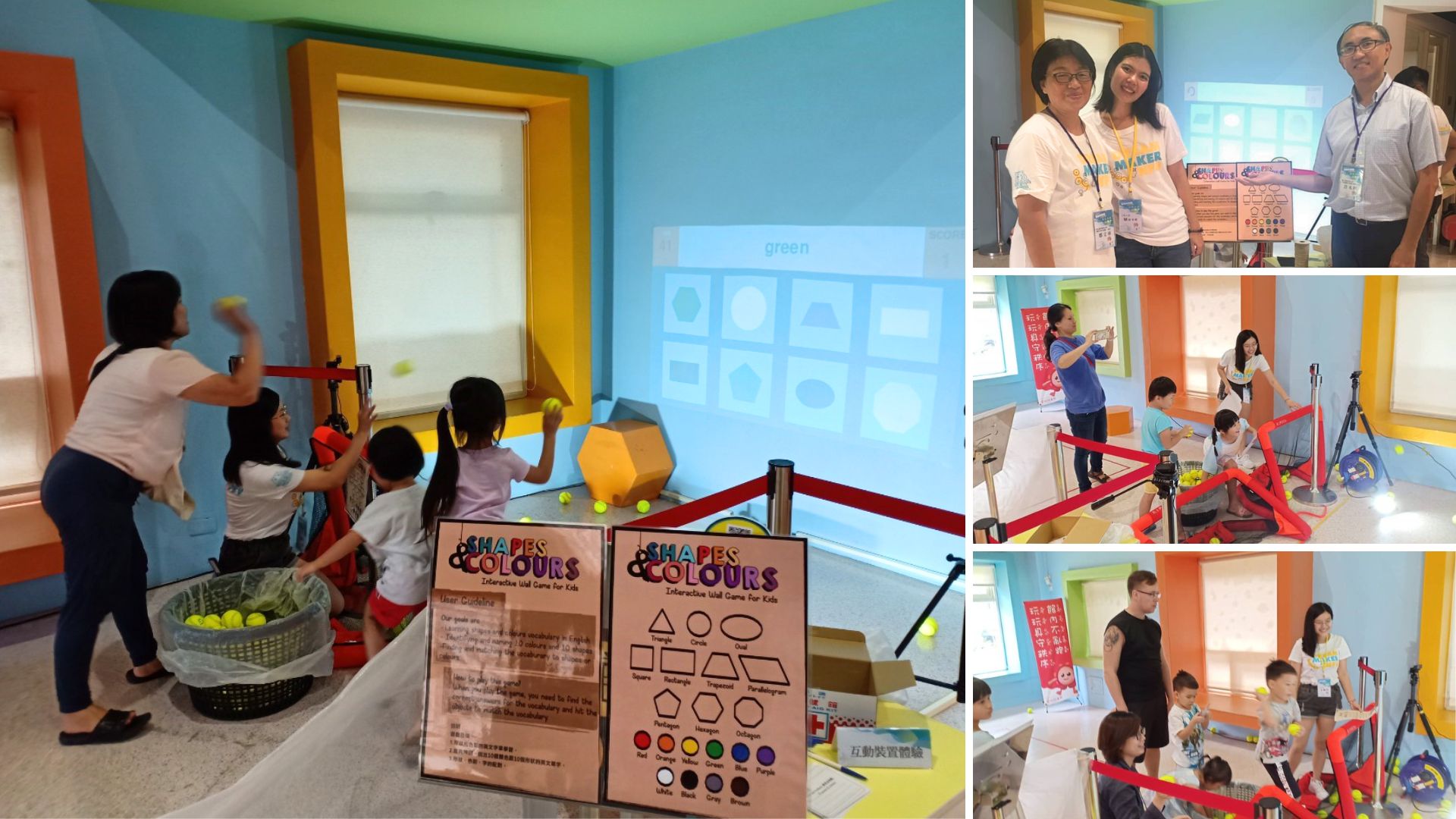
Shapes & Colors Prototype Testing I at YLCMCC on September 9, 2019
The initial test at YLCMCC’s Annual Festival in September 2019 gave us a lot of insights and feedback. We quickly realized that the one-size-fits-all game wouldn’t yield the best result and we needed a more structured approach to really understand the impact of our game on the children’s learning.
Taking this into consideration, we went back to the drawing board and redesigned the game as well as the testing process. We chose to selectively test our revised prototype with a group of 50 children with a specific age range and a fair gender distribution. The refined testing process included both pre-test and post-test evaluations to effectively measure the improvement in their English vocabulary. Watch the game testing recording below.
The focus on user experiences was paramount. Every design decision, every iteration was grounded in how it would affect the children’s learning experience. It was this user-centric design approach that enabled us to perfect our game, making Shapes & Colors not just educational, but truly engaging for the children.
Results and Outcome
Shapes & Colors was a resounding success in achieving its goals. The post-test results showed a significant improvement in the children’s English vocabulary, with the average number of known words increasing from 73.35% to 83.25%. Furthermore, because the game required physical movement, it helped in developing the motor skills of the players.
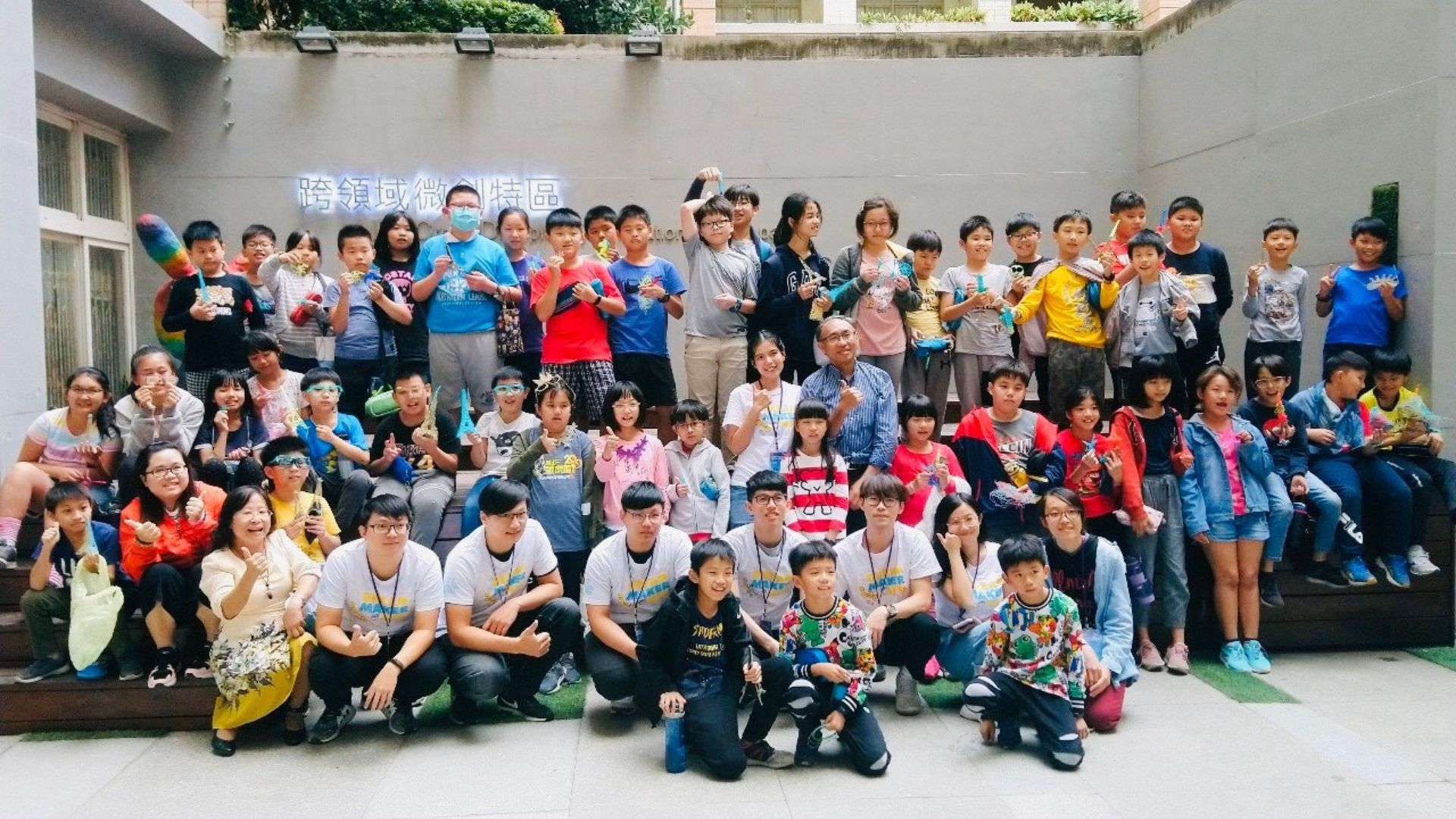
Prototype Testing II Participants: 51 children, 2 school teachers, 7 Dream Maker’s staff, Prof Yung-Hoh Sheu (one of my two advisors), and myself in the middle
Reflecting on the Journey
Living independently in a foreign country while undertaking a solo project was a challenge, but it was also a fantastic learning experience. I learned to be accountable for all aspects of my life, be it cooking, traveling, meeting new people, or managing a project. The experience opened my eyes to the possibilities that lay beyond my comfort zone, encouraging me to pursue further studies abroad. The obstacles I encountered along the way, such as a language barrier and technical difficulties, only made the final success even sweeter. This journey taught me the importance of user experience, design thinking, and most importantly, making learning a fun experience.
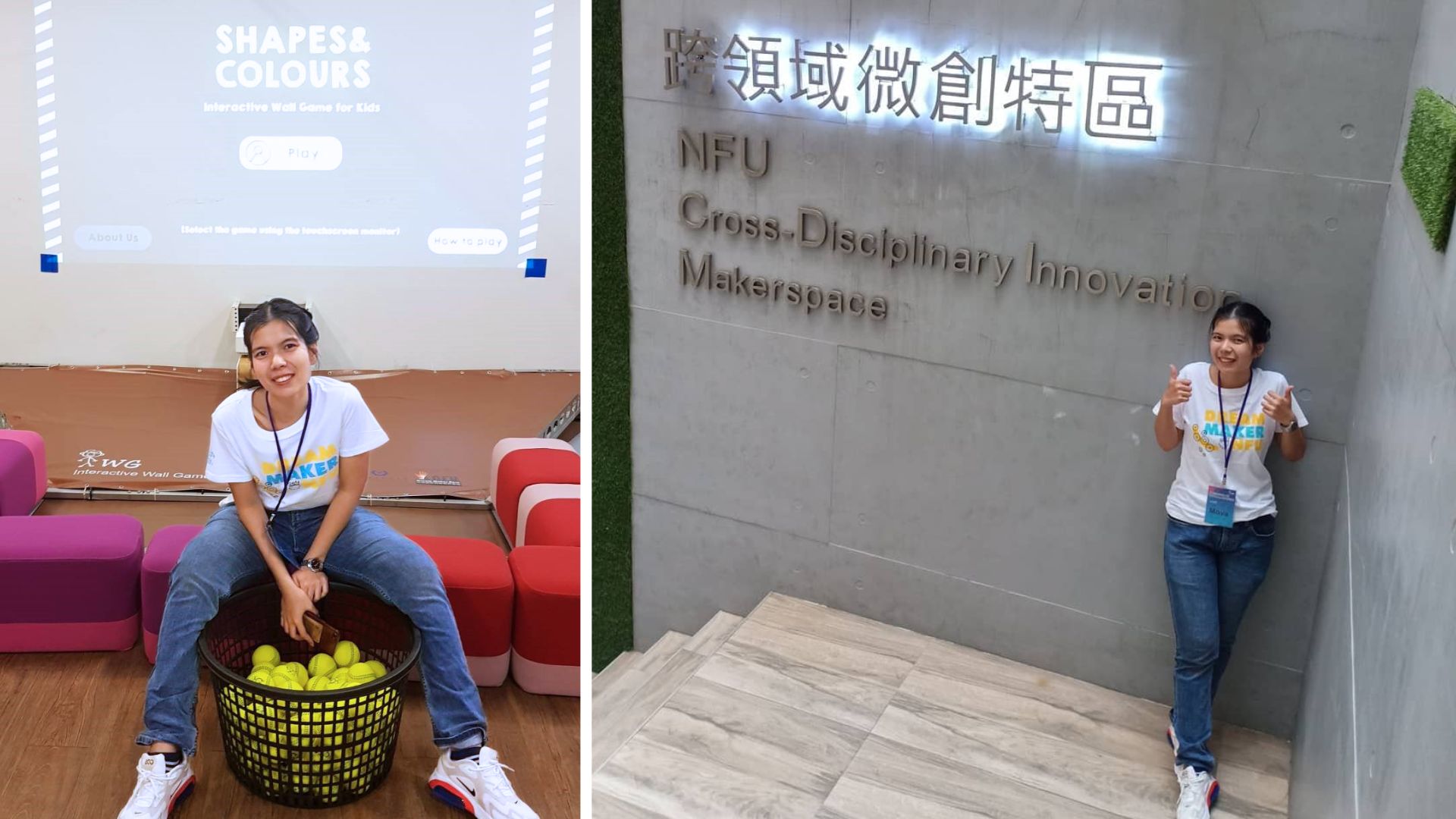
 The time has finally come! I’ve arrived at TU Delft as a master’s student in the Engineering and Policy Analysis program! Delft and TU welcomed me with open arms, especially during the Introduction Program, where I met incredible new friends. It’s inspiring to be surrounded by people who share the same drive for self-improvement and the belief that we can create meaningful change through engineering, science, and interdisciplinary approaches.
The time has finally come! I’ve arrived at TU Delft as a master’s student in the Engineering and Policy Analysis program! Delft and TU welcomed me with open arms, especially during the Introduction Program, where I met incredible new friends. It’s inspiring to be surrounded by people who share the same drive for self-improvement and the belief that we can create meaningful change through engineering, science, and interdisciplinary approaches. Have you ever heard of or used IELTS Liz ? This post is about Liz, the owner of IELTS Liz. It’s an IELTS guide platform that has helped me develop my academic English skills. Even though I learned English through many platforms and teachers, her website was actually helpful, especially for writing—the skill I spent most of my time improving. I read almost every tip, trick, and free example given on her site. …
Have you ever heard of or used IELTS Liz ? This post is about Liz, the owner of IELTS Liz. It’s an IELTS guide platform that has helped me develop my academic English skills. Even though I learned English through many platforms and teachers, her website was actually helpful, especially for writing—the skill I spent most of my time improving. I read almost every tip, trick, and free example given on her site. …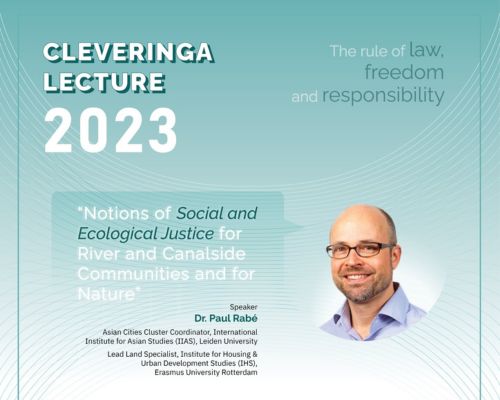 On November 22nd, 2023, I had the opportunity to attend the Cleveringa Lecture 2023 on the topic Notion of Social and Ecological Justice for River and Canalside Communities and for Nature at the Royal Netherlands Embassy in Thailand. This event, a collaboration between the embassy and the Urban Futures & Policy Research Unit of Thammasat University’s Faculty of Architecture and Planning, was more than just an academic gathering for me. It represented a fusion of my personal passion …
On November 22nd, 2023, I had the opportunity to attend the Cleveringa Lecture 2023 on the topic Notion of Social and Ecological Justice for River and Canalside Communities and for Nature at the Royal Netherlands Embassy in Thailand. This event, a collaboration between the embassy and the Urban Futures & Policy Research Unit of Thammasat University’s Faculty of Architecture and Planning, was more than just an academic gathering for me. It represented a fusion of my personal passion …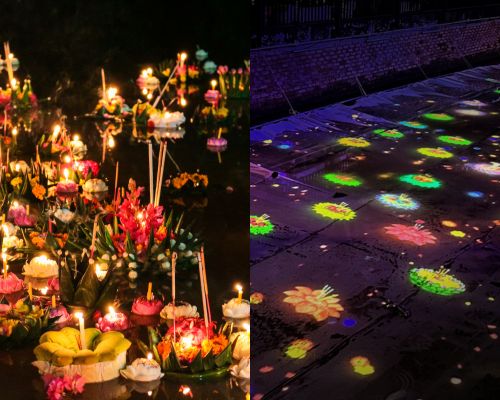 In recent years, it’s become clear that some of our most cherished traditions have unintended consequences on the environment. The Loy Krathong Festival in Thailand is a prime example. In 2022 alone, 572,603 krathongs were set afloat in the rivers of Bangkok. While 95.7% were made from biodegradable materials, the remaining 4.3% consisted of foam blocks that could be in our waterways for up to 400 years if not properly managed. Even materials like …
In recent years, it’s become clear that some of our most cherished traditions have unintended consequences on the environment. The Loy Krathong Festival in Thailand is a prime example. In 2022 alone, 572,603 krathongs were set afloat in the rivers of Bangkok. While 95.7% were made from biodegradable materials, the remaining 4.3% consisted of foam blocks that could be in our waterways for up to 400 years if not properly managed. Even materials like …